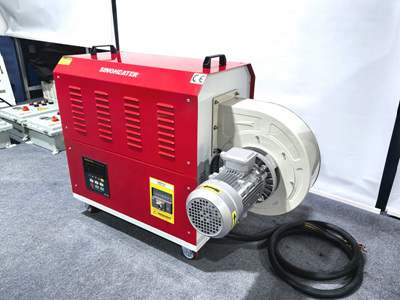The operation steps for using a hot air blower to remove old paint in furniture renovation are as follows:
Preparatory work
Tool preparation: Ensure that the hot air blower, scraper, sandpaper (80 mesh, 120 mesh, 220 mesh), damp cloth or sponge, protective equipment (such as mask, goggles, gloves), and other tools are all complete.
Environmental preparation: Choose a well-ventilated working area to avoid inhaling harmful gases.
Furniture inspection: Observe the structure of the furniture, carefully disassemble it (if necessary), keep the furniture intact, and avoid damaging the paint film and causing new damage.
Heat to soften the old paint
Set the hot air blower: Adjust the hot air blower to an appropriate temperature (usually the high-temperature setting), and keep it about 10-20 centimeters away from the surface of the furniture.
Uniform heating: Slowly move the hot air blower along the surface of the old paint to ensure that the paint surface is heated evenly. Observe the changes in the paint surface. When the old paint starts to soften and wrinkle, you can proceed to the next step.
Precautions: Avoid overheating to prevent damage to the furniture wood or fire.
Scrape off the old paint
Use a scraper: After the old paint has softened, gently scrape off the paint layer with a scraper. For corners or hard-to-reach areas, a small scraper or wire brush can be used for assistance.
Step-by-step cleaning: Scrape off one layer of old paint at a time. If there are multiple layers of paint, repeat the heating and scraping steps until all the old paint is completely removed.
Safe operation: Wear protective equipment during operation to avoid skin scratches caused by scrapers or wire brushes.
Grinding treatment
Rough grinding and leveling: Switch to 120-mesh sandpaper and sand in one direction along the wood grain to remove residual paint debris and uneven areas. The corners and edges can be sanded by wrapping a hard card with sandpaper.
Fine grinding and polishing: Switch to 220-mesh sandpaper, dip it in water and wet grind to make the surface of the furniture smoother. After grinding, wipe off the dust with a damp cloth.
When sanding, apply force evenly to avoid excessive sanding that may damage the wood surface.
Cleaning and Inspection
Clean the surface: Thoroughly clean the surface of the furniture with a damp cloth or sponge to remove the dust and impurities produced during sanding.
Check the quality: Verify whether the old paint has been completely removed and whether the surface of the furniture is smooth and flat. If there are any residual paint residues or uneven areas, re-grinding treatment is required.
Follow-up processing
Repairing flaws: If there are scratches or burn marks, you can use crayons or acrylic paint to color them up, or wrap a fine cloth with a toothpick and dip it in wood wax oil to gently wipe and repair them.
Painting or maintenance: Depending on the material and requirements of the furniture, you can choose to apply fresh paint, wax, or carry out other maintenance treatments.




